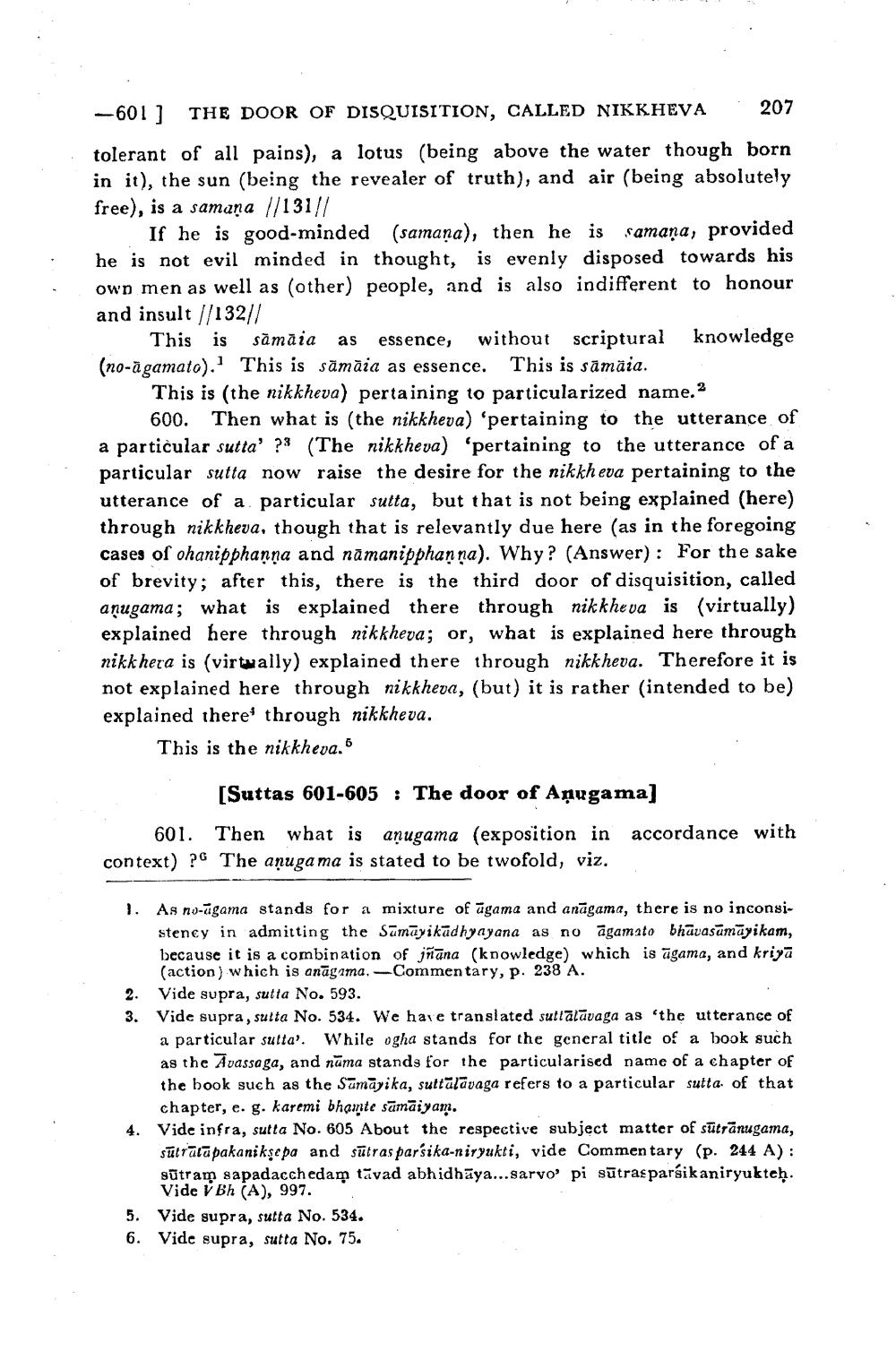________________
-601] THE DOOR OF DISQUISITION, CALLED NIKKHEVA
207
tolerant of all pains), a lotus (being above the water though born in it), the sun (being the revealer of truth), and air (being absolutely free), is a samana //131//
If he is good-minded (samana), then he is samana, provided he is not evil minded in thought, is evenly disposed towards his own men as well as (other) people, and is also indifferent to honour and insult //132//
This is sămăia as essence, without scriptural knowledge (no-agamato).1 1 This is sämaia as essence. This is samãia.
This is (the nikkheva) pertaining to particularized name.2
600. Then what is (the nikkheva) 'pertaining to the utterance of a particular sutta' ? (The nikkheva) 'pertaining to the utterance of a particular sutta now raise the desire for the nikkh eva pertaining to the utterance of a particular sutta, but that is not being explained (here) through nikkheva, though that is relevantly due here (as in the foregoing cases of ohanipphanna and naman ipphanna). Why? (Answer): For the sake of brevity; after this, there is the third door of disquisition, called anugama; what is explained there through nikkheva is (virtually) explained here through nikkheva; or, what is explained here through nikkhera is (virtually) explained there through nikkheva. Therefore it is not explained here through nikkheva, (but) it is rather (intended to be) explained there through nikkheva.
This is the nikkheva."
[Suttas 601-605
The door of Anugama]
601. Then what is anugama (exposition in accordance with context) ? The anugama is stated to be twofold, viz.
1. As no-ugama stands for a mixture of agama and anagama, there is no inconsistency in admitting the Samayikadhyayana as no agamato bhāvasāmāyikam, because it is a combination of jñana (knowledge) which is agama, and kriyā (action) which is anagama, -Commentary, p. 238 A.
2.
Vide supra, sutta No. 593.
3. Vide supra, sutta No. 534. We have translated suttālāvaga as 'the utterance of a particular sutta'. While ogha stands for the general title of a book such as the Avassaga, and nama stands for the particularised name of a chapter of the book such as the Samayika, suttālāvaga refers to a particular sutta of that chapter, e. g. karemi bhamte samāiyam.
4. Vide infra, sutta No. 605 About the respective subject matter of sütränugama, sutrata pakanikṣe pa and sutras parsika-niryukti, vide Commentary (p. 244 A): sutram sapadacchedam tavad abhidhaya...sarvo' pi sutras parsik aniryukteḥ. Vide V Bh (A), 997.
5. Vide supra, sutta No. 534.
6. Vide supra, sutta No. 75.




